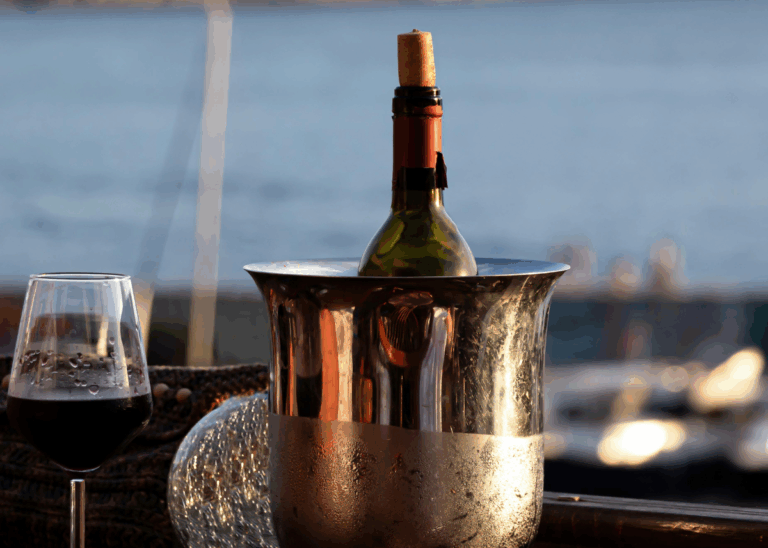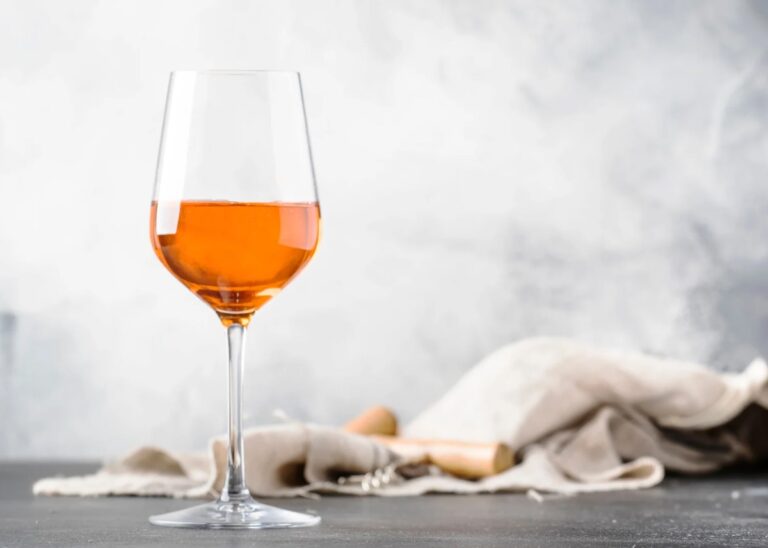[et_pb_section fb_built=”1″ _builder_version=”4.11.1″ _module_preset=”default” global_colors_info=”{}”][et_pb_row _builder_version=”4.11.1″ _module_preset=”default” global_colors_info=”{}”][et_pb_column type=”4_4″ _builder_version=”4.11.1″ _module_preset=”default” global_colors_info=”{}”][et_pb_text _builder_version=”4.11.1″ _module_preset=”default” global_colors_info=”{}”]Contents:
[/et_pb_text][et_pb_video _builder_version=”4.11.1″ _module_preset=”default” width=”75%” width_tablet=”85%” width_phone=”100%” width_last_edited=”on|phone” module_alignment=”center” global_colors_info=”{}” src=”https://youtu.be/pwI_ijXnAP0″ hover_enabled=”0″ sticky_enabled=”0″][/et_pb_video][et_pb_text _builder_version=”4.11.1″ _module_preset=”default” global_colors_info=”{}”]Transcript:
Hello, bonjour, and welcome to your new Bonner Private Wines video. I’m sure you’ve heard about sommeliers and other wine connoisseurs being able to identify the exact vintage of a wine at a blind tasting. They know nothing about the wine and they identify precisely what it is down to the vintage just by tasting it.
They smell, they sip, and they say, Oh, this is Chateau Lafite 1974. And sometimes they’re right or not far off. How can they do that? It seems like magic. Well, it isn’t.
Let me explain how they can achieve this level of precision and understanding. To comprehend it, we first need to discuss the flavors of old wine, how aromas and flavors evolve with age, before I’ll tell you the best sommelier trick for guessing an old wine’s vintage. Let’s go.
The Bouquet: Aromas of Aged Wine
We did discuss the evolution of a wine with quite a lot of details in previous videos, so I suggest we watch those as well. Also, to go even deeper, but as a refresher, the TLDR or summary, here’s what you need to understand.
With age, with cellaring, the aromas and flavors of a wine evolve. As we’ve talked about before, wine contains thousands of different molecules, especially aromas, hundreds and hundreds of compounds that all smell a little different. Some say wine is alive, which is kind of true, it generally does contain some microorganisms that continue surviving in the liquid unless it’s a very tightly filtered wine, which most good wines aren’t.
But more importantly, wine breathing is, you could say not that it inhales oxygen to burn sugars or fat like we do, but chemically wine does absorb through the cork a small amount of oxygen, which changes over time the shape and composition of those hundreds of different aromas in it. Some aromas are degraded, some break down with time and oxygen. Some combine with each other, some become more or less odorant, etc. It’s a little bit like cheese. In fact, an old matured cheese tastes very different from a fresh, creamy one. You get the idea.
For wine, this evolution consists of young wines tasting closer to the grape juice at an early age. For whites, that would be fruits like pears, peach, apricot, full reds, fresh strawberry or fresh cherries in general.
With time in the cellar and with micro oxygenation through the cork, well, the aromatic profile of the wine changes from fruity aromas that are broken down to develop more savory notes, the spices become more pungent on the palate. It tastes like earthy notes of forest floor, of mushroom, soy sauce, even grilled meat sometimes. So when you’re used to tasting wines at different ages, you’re able to place them on that spectrum online between very fruity young wine at the beginning and an old wine that tastes very savory, that has lots of mushroom earthy flavors. The fruit fades away year after year while the spices and earthiness grow stronger and stronger.
Wisdom with Age: How Old Wine Tastes Smoother
The second clue, the other give away to how old the wine is — and it’s valid more for reds actually this time — is its texture. A young wine has more aggressive tannins. The tannins are very young and very reactive with the proteins of your palate resulting in a greater astringency, a tighter feel in your mouth.
You can think of these young tannins as molecules that would have sort of spikes of electricity around them on their edges. This electricity is what reacts strongly with your taste buds, and young wines have a lot of them. So they sort of react strongly with your buds and they’re aggressive.
With time and cellaring, these aggressive tannins react with each other, they use this electric energy to combine with each other and they form bigger molecules with less electricity on the edges so they’re less reactive. This does two things. The tannins get bigger, so they feel more granulous and softer on the palate. And they become so big, in fact, that at some point they start sedimenting at the bottom of the bottle, which is why old wines have these sediments that need to be decanted out.
Secondly, because these aggressive tannins have reacted with each other, well, they have less electric charges on them to react with your palate, so they don’t react as strongly with the protein of your mouth and they feel much smoother.
Again, you have a spectrum of evolution of the texture of the wine from very tannic and aggressive at a young age to ultimately very thin and watery when the wine becomes eventually way too old. All the tannins have disappeared and it’s become strained, maybe smooth, but all the tannins have disappeared. That’s your second spectrum.
Magic? How Sommeliers Guess a Vintage
And so when sommeliers compete at blind tasting wines and guessing what winery they are from and what vintage they were made from, they use both these spectrums of evolution, the fruit versus earthiness, spectrum of aromas and the aggressive versus thin and soft spectrum to place each individual wine on a scale.
And that gives them an indication of how old the wine is because they’ve tasted before thousands and thousands of wines of all ages. Some sommeliers become extremely good and precise at placing the wine on a scale and guessing more or less the vintage.
But this is not the only trick sommeliers have up their sleeves. They’ll have you believe that they can identify, guess any wine from any vintage in the whole world.
Well, the truth is that these “best sommeliers in the world” type of competitions only include a finite number of possible wineries the wines on display can be sourced from. They only include top chateaux from Bordeaux, top chateaux from — domaines from Burgundy, possibly some top wines from Barolo or Tuscany in Italy, perhaps some cult wines as well from California that everyone knows about.
Only that type of ultra premium cult wines from around the world would be included in the blind tasting. Wines these sommeliers often have on their wine lists, in their restaurants, wineries they know about. They visited them. They’ve tasted all of the different vintages before. So the sommeliers will first taste a wine and identify the region, which is fairly easy when you only compare ultra high end wines because they really taste very different from one another, unlike cheap wine.
Secondly, and that’s way harder, they’ll have to identify the winery and that’ll be based on their knowledge of each individual style of each producer. More or less oaky, a bigger texture from the Pauillac compared to a Margaux if we’re in Bordeaux, for example, or a Pommard in Burgundy will be more aggressive and rougher than a Gevrey-Chambertin. And then they’ll guess the individual style of each winery because they all have their own signature traits.
Finally, to give the vintage they’ll first guess roughly the age of the wine. Is it a ten year old wine from the 2000 or 20 tens? A 20 year old wine, a 40 year old wine? You can estimate roughly using the two scales of spectrums that we’ve talked before about before.
Once they know it’s a 1970s wine, for example, they use their knowledge about the weather condition of each vintage through the 1970s. They’ll say 71 was extremely bad, for example. So it’s probably not that vintage, not that vintage because 1971s aren’t drinkable by now. Same goes with 1973 and 1976. So those are out of the way. I’m just using fictional examples here, by the way, not actual assessments of these vintages.
Then they’ll think 1977 and 79 were extremely hot vintages. So they would expect a much bigger, richer wines, which this wine is not. It’s very acidic and grassy. So that can be these vintages either out of the way. I’m only left with 74, 75 and 78 by now. I’m a sommelier, I’ve tasted in 1978, and it was a lot spicier, a lot more complex and balanced than this wine is.
So it’s not 1978 and 78 would be a bit more youthful as well. So I’m left with 1974 and 1975. And as far as I remember, if I smell this wine, well, 1975 had a bit more laurel leaf characters to it and a bit of a raspberry fresher character to it. So I don’t think it’s 1975. I think this is 1974.
So I’m going to say this is Chateau Lafite, 1974, and here you have it. This is the process, I think, that sommeliers use to identify each wine and the actual vintage, you know, all the tricks. Now, even though I’m obviously simplifying here quite a lot because it’s a very complex process requiring astronomical amounts of tastings and the memorizing of huge amounts of data points.
So they have little cheat sheets for each wine that they’ll study for years and years and years. Very difficult, but not impossible. I hope now at least you have a better understanding of how they do it. The sommelier’s tricks to guessing a vintage.
And I leave it here for today. Thanks for watching and I will see you soon, as usual, in the wonderful world of wine. Cheers.[/et_pb_text][/et_pb_column][/et_pb_row][/et_pb_section]


